Related Research Articles

Swabian is one of the dialect groups of Alemannic German that belong to the High German dialect continuum. It is mainly spoken in Swabia, which is located in central and southeastern Baden-Württemberg and the southwest of Bavaria. Furthermore, Swabian German dialects are spoken by Caucasus Germans in Transcaucasia. The dialects of the Danube Swabian population of Hungary, the former Yugoslavia and Romania are only nominally Swabian and can be traced back not only to Swabian but also to Franconian, Bavarian and Hessian dialects, with locally varying degrees of influence of the initial dialects.

The Danube Swabians is a collective term for the ethnic German-speaking population who lived in various countries of central-eastern Europe, especially in the Danube River valley, first in the 12th century, and in greater numbers in the 17th and 18th centuries. Most were descended from earlier 18th-century Swabian settlers from Upper Swabia, the Swabian Jura, northern Lake Constance, the upper Danube, the Swabian-Franconian Forest, the Southern Black Forest and the Principality of Fürstenberg, followed by Hessians, Bavarians, Franconians and Lorrainers recruited by Austria to repopulate the area and restore agriculture after the expulsion of the Ottoman Empire. They were able to keep their language and religion and initially developed strongly German communities in the region with German folklore. Thousands also came from Eastern Europe.

Baranya or Baranja is a geographical and historical region between the Danube and the Drava rivers. Its territory is divided between Hungary and Croatia. In Hungary, the region is included into Baranya county, while in Croatia, it is included into Osijek-Baranja county.
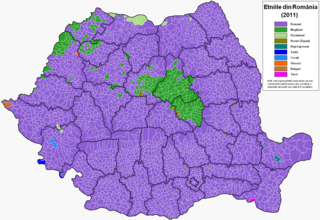
About 10.5% of Romania's population is represented by minorities. The principal minorities in Romania are Hungarians and Romani people, with a declining German population and smaller numbers of Poles in Bukovina, Serbs, Croats, Slovaks and Banat Bulgarians, Ukrainians, Greeks, Jews, Turks and Tatars, Armenians, Russians, Afro-Romanians, and others.
The Banat Swabians are an ethnic German population in the former Kingdom of Hungary in Central-Southeast Europe, part of the Danube Swabians. They emigrated in the 18th century to what was then the Austrian Empire's Banat of Temeswar province, later included in the Habsburg Kingdom of Hungary, a province which had been left sparsely populated by the wars with the Ottoman Empire. At the end of World War I in 1918, the Swabian minority worked to establish an independent multi-ethnic Banat Republic; however, the province was divided by the Treaty of Versailles of 1919, and the Treaty of Trianon of 1920. The greater part was annexed by Romania, a smaller part by the Kingdom of Serbs, Croats and Slovenes and a small region around Szeged remained part of Hungary.
Pokrajac is a Serbo-Croatian surname. There exist at least three theories as to its origin. According to one, it came into being when there was an individual who served the Austro-Hungarian forces on the military border – the past border between Austria and Bosnia, which later belonged to the Ottomans. Since the border was near the edge ("kraj") of the country, the surname Pokrajac came about. Pokrajac, therefore, is a name that describes an individual who lives or exists on an edge, or end ("kraj").

Bóly is a town in Baranya County, Hungary. Until the end of World War II, the Inhabitants was Danube Swabians, also called locally as Stifolder, because there Ancestors once came at the 17th century and 18th century from Fulda (district). Mostly of the former German Settlers was expelled to Allied-occupied Germany and Allied-occupied Austria in 1945–1948, about the Potsdam Agreement. Only a few Germans of Hungary live there, the majority today are the descendants of Hungarians from the Czechoslovak–Hungarian population exchange. They got the houses of the former Danube Swabians Inhabitants.

German Hungarians are the German-speaking minority of Hungary, sometimes called Danube Swabians, many of whom call themselves "Shwoveh". There are 131,951 German speakers in Hungary. Danube Swabian is a collective term for a number of German ethnic groups who lived in the former Kingdom of Hungary, including the Kingdom of Croatia-Slavonia and Vojvodina.
The Germans of Yugoslavia are people of German descent who live in Croatia, Serbia, Bosnia and Herzegovina, or Slovenia. The Germans of the former Yugoslavia include both Danube Swabians and Austrians. The largest German minority in the former Yugoslavia is in Serbia.
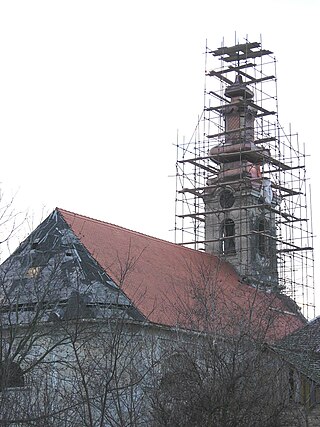
Savino Selo, formerly Torschau / Torszà / Torša, is a village in Serbia. It is situated in the municipality of Vrbas, in the South Bačka District, Vojvodina province.
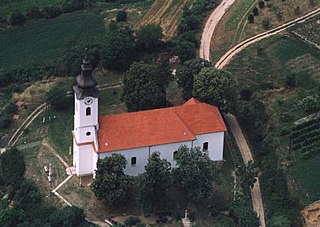
Závod is a village in Tolna County, Hungary.
Beremend is a village in Baranya County, Hungary on the Croatian border. Residents are Magyars, with minority of Serbs. Until the end of World War II, the Inhabitants was Danube Swabians, also called locally as Stifolder, because there Ancestors once came at the 17th century and 18th century from Fulda (district). Mostly of the former German Settlers was expelled to Allied-occupied Germany and Allied-occupied Austria in 1945–1948, about the Potsdam Agreement. Only a few Germans of Hungary live there, the majority today are the descendants of Hungarians from the Czechoslovak–Hungarian population exchange. They got the houses of the former Danube Swabians Inhabitants.

Kisjakabfalva is a village in Baranya county, Hungary. Until the end of World War II, the majority of the inhabitants were Danube Swabians, also called locally as Stifolder, because their ancestors once came in the 17th century and 18th century from Fulda (district). Mostly of the former German settlers were expelled to allied-occupied Germany and allied-occupied Austria in 1945–1948, as a result of the Potsdam Agreement. Only a few Germans of Hungary live there, the majority today are the descendants of Hungarians from the Czechoslovak–Hungarian population exchange. They occpied the houses of the former Danube Swabians inhabitants.
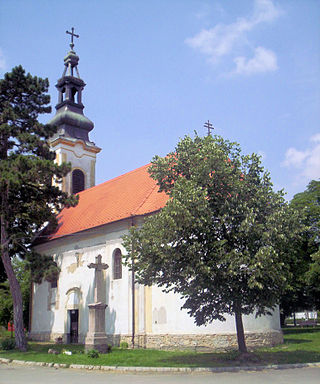
Majs is a village in Baranya County, Hungary. Residents are Magyars, with a minority of Danube Swabians and Serbs.

Udvar is a village in Baranya county, Hungary. This village is found near the Danube River. Until the end of World War II, the inhabitants were Danube Swabians, also called locally as Stifolder, because their ancestors once came around 1720 from Fulda (district). Most of the former German settlers were expelled to allied-occupied Germany and allied-occupied Austria in 1945–1948, about the Potsdam Agreement. Only a few Germans of Hungary live there, the majority today are the descendants of Hungarians from the Czechoslovak–Hungarian population exchange. They occupied the houses of the former Danube Swabians inhabitants.

Donald Eugene Lenhardt was an American outfielder, first baseman, third baseman, scout and coach in American Major League Baseball. In his playing days, he stood 6 feet 3 inches (1.91 m) tall, weighed 195 pounds (88 kg), and threw and batted right-handed. He was nicknamed "Footsie" by teammates because he often had difficulty finding shoes that fit him properly.

The Danube is a large and historically important river, flowing through Europe from west to east. It has been a frontier of the Roman Empire and today connects 10 European countries, running through their territories or being a border. Originating in Germany, the Danube flows southeast for 2,850 km (1,770 mi), passing through or bordering Austria, Slovakia, Hungary, Croatia, Serbia, Romania, Bulgaria, Moldova, and Ukraine before draining into the Black Sea. Among the many cities on the river are 4 capitals: Vienna, Budapest, Belgrade and Bratislava. Its drainage basin amounts to 817 000 km² and extends into nine more countries.
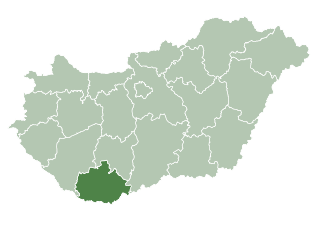
Töttös is a village in Baranya county, Hungary. Until the end of World War II, the majority of the inhabitants were Danube Swabians, also called locally as Stifolder, because their ancestors once came in the 17th century and 18th century from Fulda (district). Most of the former German settlers were expelled to allied-occupied Germany and allied-occupied Austria in 1945–1948, as a result of the Potsdam Agreement. Only a few Germans of Hungary live there, the majority today are the descendants of Hungarians from the Czechoslovak–Hungarian population exchange. They occupied the houses of the former Danube Swabians inhabitants.
Vokány is a village in Baranya County, Hungary. Until the end of World War II, the inhabitants were Danube Swabians, also called locally as Stifolder, because their ancestors once came around 1720 from Fulda (district). Mostly the former German settlers were expelled to Allied-occupied Germany and Allied-occupied Austria in 1945–1948, about the Potsdam Agreement. Only a few Germans of Hungary live there, the majority today are the descendants of Hungarians from the Czechoslovak–Hungarian population exchange. They obtained the houses of the former Danube Swabians inhabitants.
The surname Otaño derives from the surname ‘Otanović’ which derives from the Serbian region.